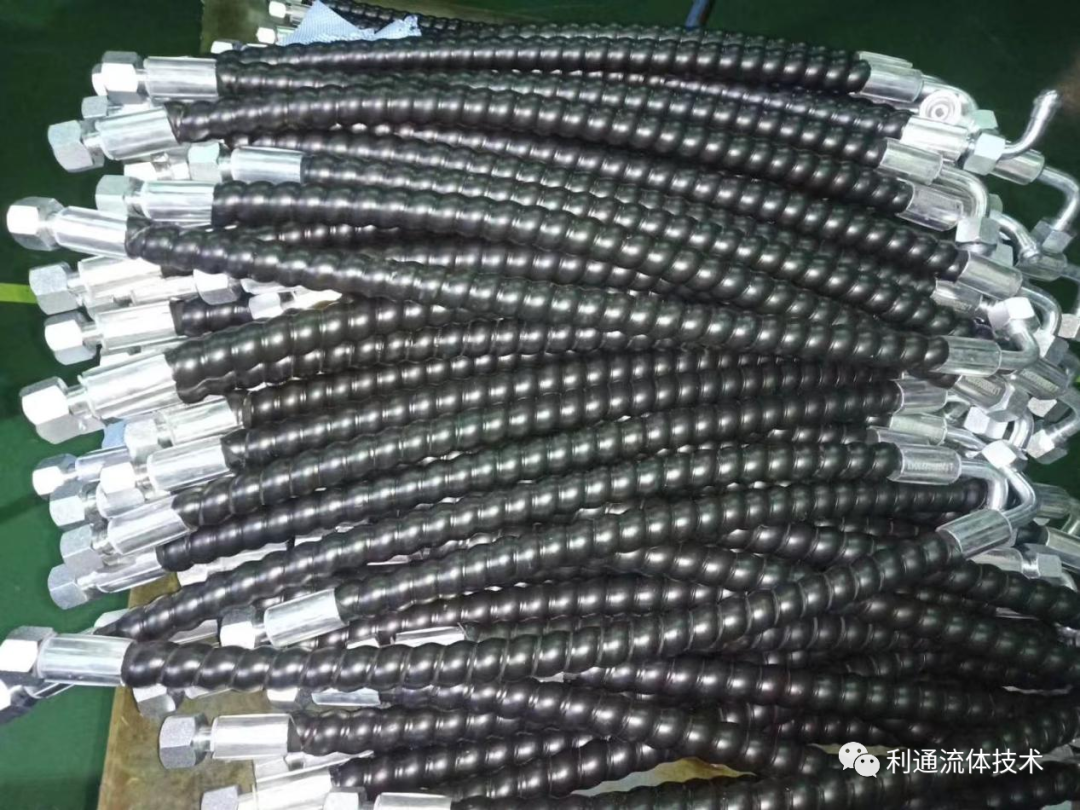Clearing the blockage of high-pressure oil pipe
2024-05-29 15:48:29
As an important part of modern mechanical equipment, high-pressure oil pipes undertake the important task of transmitting high-pressure fuel. However, in the long-term use process, high-pressure oil pipes will inevitably have blockage failures, which will not only affect the normal operation of the equipment, but may even cause equipment damage or safety accidents. Therefore, it is very important to clear the blockage failure of high-pressure oil pipes in a timely and effective manner.
There are many reasons for the blockage failure of high-pressure oil pipes, the most common of which include fuel impurities, sediments, pipeline aging, and external foreign matter intrusion. These factors will cause the internal channel of the oil pipe to narrow or completely block, making it impossible for high-pressure fuel to be transmitted normally. When the high-pressure oil pipe is blocked, the equipment may show symptoms such as insufficient power, increased fuel consumption, abnormal emissions, and even cause equipment shutdown in severe cases.
In order to solve the blockage failure of high-pressure oil pipes, people have adopted a variety of unblocking methods. Among them, water pressure unblocking method is a common and effective method. By connecting the water pipe and the high-pressure oil pipe, using the power of the water flow to flush the inside of the oil pipe, most of the impurities and sediments can be removed. In addition, the acid-base reaction method is also a commonly used unblocking method, which uses the chemical reaction of acidic and alkaline substances to dissolve the blockage in the oil pipe. However, this method requires attention to controlling the acid-base concentration and reaction time to avoid corrosion or damage to the oil pipe.
In addition to traditional unblocking methods, modern technology also provides more options for solving high-pressure oil pipe blockage failures. For example, the method of unblocking with high-pressure gas or liquid can remove blockages in the oil pipe more quickly and effectively. At the same time, some advanced equipment and technologies can also be used to detect and locate the blockage position of the oil pipe, providing more precise guidance for unblocking work.
However, it is worth noting that the unblocking of high-pressure oil pipe blockage failure is not a one-time solution. In order to avoid the recurrence of similar failures, people also need to take measures to prevent it from the source. For example, strengthen the filtration and purification of fuel to reduce impurities and sediments in the fuel; regularly inspect and maintain the high-pressure oil pipe to promptly detect and deal with potential blockage risks; optimize the operating parameters and working environment of the equipment to reduce the possibility of oil pipe blockage.
In addition, the handling of high-pressure oil pipe blockage failures also needs to be flexibly responded to according to specific circumstances. Different equipment and working environments may have different effects on unblocking methods and effects. Therefore, in actual operation, people need to choose appropriate dredging methods and tools according to factors such as the type of equipment, the material of the oil pipe and the degree of blockage to ensure the effectiveness and safety of the dredging work.
In short, the dredging of high-pressure oil pipe blockage failure is of great significance to ensure the normal operation of the equipment and extend its service life. By adopting appropriate dredging methods and preventive measures, people can effectively solve the problem of high-pressure oil pipe blockage and improve the reliability and safety of the equipment. At the same time, with the continuous advancement of technology and the continuous expansion of applications, it is believed that there will be more efficient and convenient high-pressure oil pipe dredging methods and technologies in the future, bringing more convenience and security to people's lives and work.